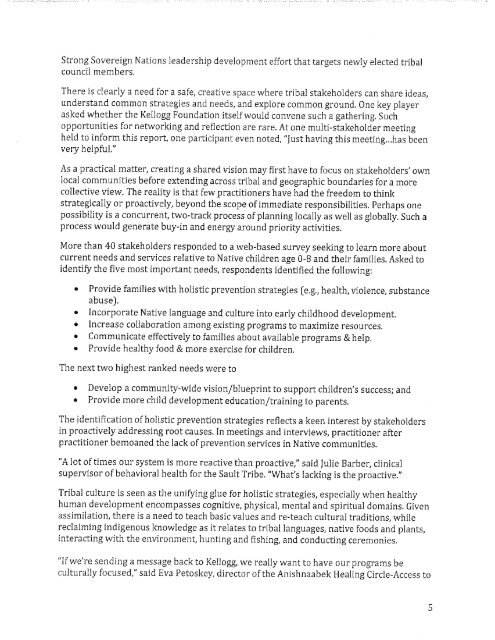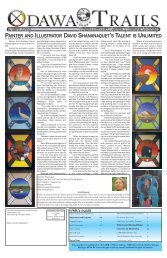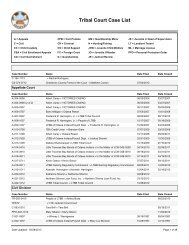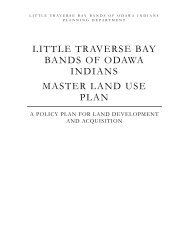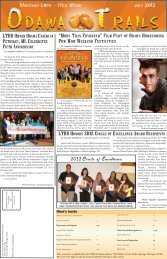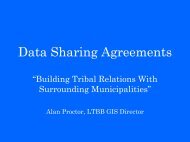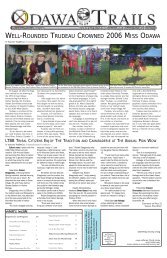United Tribes ) Michigan - Little Traverse Bay Bands of Odawa Indians
United Tribes ) Michigan - Little Traverse Bay Bands of Odawa Indians
United Tribes ) Michigan - Little Traverse Bay Bands of Odawa Indians
Create successful ePaper yourself
Turn your PDF publications into a flip-book with our unique Google optimized e-Paper software.
Strong Sovereign Nations leadership development effort that targets newly elected tribal<br />
council members.<br />
There is clearly a need for a safe, creative space where tribal stakeholders can share ideas,<br />
understand common strategies and needs, and explore common ground. One key player<br />
asked whether the Kellogg Foundation itself would convene such a gathering. Such<br />
opportunities for networking and reflection are rare. At one multi-stakeholder meeting<br />
held to inform this report, one participant even noted, "Just having this meeting...has been<br />
very helpful."<br />
As a practical matter, creating a shared vision may first have to focus on stakeholders' own<br />
local communities before extending across tribal and geographic boundaries for a more<br />
collective view. The reality is that few practitioners have had the freedom to think<br />
strategically or proactively, beyond the scope <strong>of</strong> immediate responsibilities. Perhaps one<br />
possibility is a concurrent, two-track process <strong>of</strong> planning locally as well as globally. Such a<br />
process would generate buy-in and energy around priority activities.<br />
More than 40 stakeholders responded to a web-based survey seeking to learn more about<br />
current needs and services relative to Native children age 0-8 and their families. Asked to<br />
identify the five most important needs, respondents identified the following:<br />
• Provide families with holistic prevention strategies (e.g., health, violence, substance<br />
abuse).<br />
• Incorporate Native language and culture into early childhood development.<br />
• Increase collaboration among existing programs to maximize resources.<br />
• Communicate effectively to families about available programs & help.<br />
• Provide healthy food & more exercise for children.<br />
The next two highest ranked needs were to<br />
• Develop a community-wide vision/blueprint to support children's success; and<br />
• Provide more child development education/training to parents.<br />
The identification <strong>of</strong> holistic prevention strategies reflects a keen interest by stakeholders<br />
in proactively addressing root causes. In meetings and interviews, practitioner after<br />
practitioner bemoaned the lack <strong>of</strong> prevention services in Native communities.<br />
"A lot <strong>of</strong> times our system is more reactive than proactive," said Julie Barber, clinical<br />
supervisor <strong>of</strong> behavioral health for the Sault Tribe. "What's lacking is the proactive."<br />
Tribal culture is seen as the unifying glue for holistic strategies, especially when healthy<br />
human development encompasses cognitive, physical, mental and spiritual domains. Given<br />
assimilation, there is a need to teach basic values and re-teach cultural traditions, while<br />
reclaiming indigenous knowledge as it relates to tribal languages, native foods and plants,<br />
interacting with the environment, hunting and fishing, and conducting ceremonies.<br />
"If we're sending a message back to Kellogg, we really want to have our programs be<br />
culturally focused," said Eva Petoskey, director <strong>of</strong> the Anishnaabek Healing Circle-Access to<br />
5


